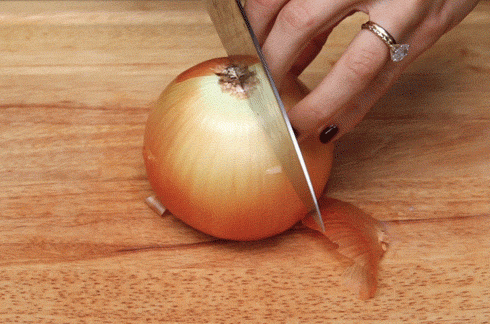A coat of fresh paint can brighten any room, but lingering fumes can be irritating when you’re painting with any strong-smelling paint. Opening doors and windows to let in outdoor air is one of the best ways to disperse the overpowering smell of new paint, but there are also a few household supplies that naturally absorb paint odors.
When you reduce the overall smell of paint fumes from the beginning of your project, you won’t have to wait until you finish painting to freshen up your home. Here are a few tips to help get rid of that lingering paint smell with six common and eco-friendly products.
How to Get Rid of Paint Smell
✨ Baking Soda
Baking soda works great to absorb odors in the laundry and refrigerator, so it should be no shock that it can also be used to capture paint fumes. Pour some of the powder into a couple of shallow bowls and place them all around the room. When you are finished painting, you can dispose of the baking soda by pouring it down your drains or garbage disposal to give your plumbing a quick refresh.
✨ Charcoal
Activated charcoal is well-known for being an excellent odor reducer. You can easily purchase it pre-packaged in small pouches or in a loose crushed formula that can be placed in bowls around the room. As a bonus, you can use the leftover charcoal to make sachets to kill odor in your smelly shoes.
✨ Onions
You might be wondering if smelling the paint fumes or the onions is worse, but trust us when we say the onion smell is far more natural, so you may actually like their pungent aroma. Simply slice two medium-sized onions and place the pieces on plates or bowls around the room.
When your paint job is over, don’t use these for cooking, because they may have absorbed volatile organic compounds, or VOCs according to the EPA.
✨ Lemon Water
Water will be able to absorb those nasty VOCs on its own, but adding some slices of fresh lemon can give off an extra-clean citrus scent that is even more refreshing. Water can take a bit longer to absorb odors, so plan to leave those citrusy bowls of lemon water in the room overnight.
✨ Coffee Grounds
Got some coffee grounds you don’t really love the taste of? Use them to catch some of those paint odors! Bowls of dry coffee grounds can actually absorb the paint fumes. Just be sure to dispose of them in the trash when you’re done with the whole job.
✨ Natural Extracts
Two of the best natural extracts for eliminating paint odor and refreshing the air are vanilla and peppermint, and they’re probably the best smelling essential oils too. Simply place a few drops of each extract on cotton balls and place them in small bowls or saucers scattered around the room. Some painting experts even swear by adding a drop or two of the extracts directly to the can of paint before starting the job to lessen the odor, but we’ll leave that up to you.
Tips to Prevent Heavy Paint Fumes
By addressing paint fumes before you even begin a painting project, you can reduce the odor and make the process easier.
✨ It is not always possible, but the best way to avoid heavy fumes is to select a healthy alternative paint, like one with low or zero VOCs. If you have to use an oil-based paint or primer, choose one that is specifically marked as low odor. You can also look into paints made from plants, milk, minerals, or clay.
✨ Before you start painting around your house, check the weather forecast. Avoiding days with high humidity in the air can actually speed up the drying process, plus remember that paint emits the strongest odor while being applied and waiting to dry. The longer it takes to dry, the more chance soft materials like carpet, drapes, and upholstery will absorb the odors.
✨ Let each coat of paint dry completely before applying the next layer of paint as damp walls can actually trap fumes and produce odors for a longer amount of time. As you paint, try to keep the lids on the paint cans and cover any paint trays and brushes with plastic wrap when you’re not using them.
✨ While you paint one room, keep any doors and windows around the house open if possible to allow the fumes to dissipate into the air. You should try to keep the doors of the other rooms in your house closed to prevent the fumes from spreading. Remember to use these same tips when stripping paint for a project.
For more post construction clean up tips and tricks, check out our blog to find our helpful cleaning guides and information. You can also contact us today to find out how we can help you keep your home tidy all year long!
 Recurring Cleaning
Recurring Cleaning Move In / Out Cleaning
Move In / Out Cleaning Office Cleaning
Office Cleaning Housekeeping
Housekeeping Post Construction Cleaning
Post Construction Cleaning Green Cleaning
Green Cleaning Home Organization
Home Organization Deep Cleaning
Deep Cleaning Oven Cleaning
Oven Cleaning Airbnb Cleaning
Airbnb Cleaning Refrigerator Cleaning
Refrigerator Cleaning





